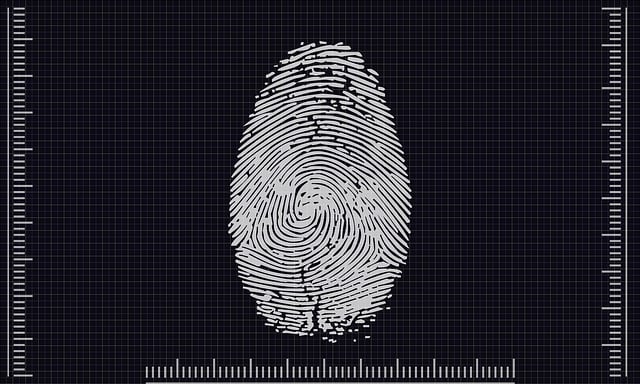The Vehicle Identification Number (VIN), a 17-character code, uniquely identifies every motor vehicle, revealing its manufacturing details like origin, manufacturer, model year, equipment, and engine type. Decoding this VIN using online tools provides buyers with crucial history and specifications, aiding informed purchasing decisions. Advances in OBD (On-Board Diagnostics) VIN technology, driven by digital automotive platforms, offer improved accuracy and efficiency, especially for pre-owned cars. This transparency benefits both buyers and sellers, revolutionizing vehicle verification through AI and machine learning, ensuring safer vehicles and efficient processes.
Unlocking Vehicle Secrets: The Power of VIN Decoding
Vehicle Identification Numbers (VIN) are more than just a string of letters and numbers; they hold a treasure trove of information about a car’s identity and history. By mastering the art of VIN decoding, consumers can access critical specifications, ensuring they make well-informed decisions when purchasing or selling vehicles. This article guides you through the intricate process, from understanding the basic structure of a VIN to exploring recent technological advancements that have revolutionized vehicle verification, ultimately empowering both buyers and sellers in today’s market.
- Understanding VIN Numbers: The Basic Structure
- Decoding Make and Model: A Step-by-Step Guide
- Key Data Elements Revealed by VIN Decoding
- Recent Advancements in OBD VIN Technology
- Benefits for Car Buyers: Making Informed Choices
- Advantages for Sellers: Transparency and Trust
- Future of VIN Decoding: Enhanced Vehicle Verification
Understanding VIN Numbers: The Basic Structure

A Vehicle Identification Number (VIN) is a unique code assigned to every motor vehicle, offering a comprehensive summary of its identity and history. This 17-character alphanumeric sequence provides insights into various aspects of the car’s design, manufacturing details, and quality control measures. The VIN is often considered a vehicle’s fingerprint, as it remains constant throughout its life, even when parts are replaced or modified.
The structure of a VIN follows a standardized format, with different segments encoding specific information. The initial characters typically represent the country of origin and the manufacturer, while subsequent digits or alphanumerics specify the model year, plant where it was assembled, and various other identifiers related to engine type, equipment, and production details. This structured coding scheme allows for efficient tracking and identification across industries, ensuring transparency in vehicle sales and servicing.
Decoding Make and Model: A Step-by-Step Guide

Decoding a car’s make and model is a straightforward process when utilizing modern VIN (Vehicle Identification Number) decoding tools. Here’s a step-by-step guide to help you navigate this valuable data source. First, obtain the VIN from the vehicle itself, often found on a plate in the driver’s door jamb or under the hood. Then, access an online VIN decoder tool, many of which are available for free. Enter the VIN into the designated field and click decode. The tool will retrieve information from global databases, providing insights into the car’s brand, model, production year, engine type, and even color in some cases. Each character in a VIN has a specific meaning, allowing you to uncover details like where and when the vehicle was manufactured. By understanding this process, consumers can verify a car’s history, compare specifications across makes and models, and make more confident decisions before purchasing.
Key Data Elements Revealed by VIN Decoding

When you decode a Vehicle Identification Number (VIN), several critical data elements about a car come to light, offering a comprehensive snapshot of its history and features. These include the make and model, production year, and a unique combination of identifying numbers specific to that vehicle. The VIN also reveals important safety specifications, such as crash test ratings and the presence of advanced driver-assistance systems (ADAS).
Moreover, it provides details about the engine type, including its displacement, power output, and fuel efficiency. Other notable information includes the color, number of previous owners, service history, and whether the vehicle has been in any accidents or major repairs. Accessing this data empowers consumers to compare different vehicles, assess their needs, and make well-informed choices when buying or selling a car.
Recent Advancements in OBD VIN Technology

Recent advancements in OBD (On-Board Diagnostics) VIN (Vehicle Identification Number) technology have significantly improved the accuracy and efficiency of car data decoding. These innovations are primarily driven by the increasing demand for transparent and reliable vehicle information among consumers. With the rise of digital automotive platforms, buyers now expect detailed and up-to-date specifications at their fingertips.
OBD VIN identification systems leverage sophisticated algorithms and databases to extract and interpret complex vehicle data. Enhanced machine learning capabilities allow these tools to learn from vast datasets, improving their accuracy over time. As a result, consumers can trust that the information they receive is not only precise but also consistent across different platforms and devices.
Benefits for Car Buyers: Making Informed Choices

For car buyers, decoding a Vehicle Identification Number (VIN) offers immense advantages when making their next purchase. By accessing detailed information about a vehicle’s specifications, history, and components, buyers can make well-informed decisions that align with their needs and preferences. This is especially valuable when considering pre-owned vehicles, where knowing the exact make, model, and year can reveal hidden issues or highlight exceptional features.
With recent advancements in OBD (On-Board Diagnostics) VIN identification technology, buyers have access to even more precise and up-to-date data. These developments ensure that consumers receive accurate information about fuel efficiency, safety ratings, previous ownership history, and any reported accidents or maintenance records associated with the vehicle. Such transparency empowers car buyers to choose vehicles that meet their standards, ultimately leading to happier and safer motoring experiences.
Advantages for Sellers: Transparency and Trust

For sellers, decoding a VIN (Vehicle Identification Number) offers significant advantages, primarily in the form of enhanced transparency and trust. By providing potential buyers with accurate and detailed vehicle specifications, sellers can foster confidence in their clientele. This is particularly valuable when dealing with pre-owned or used cars, where buyers might otherwise lack certainty about the exact make, model, and year of manufacture.
With recent advancements in OBD (On-Board Diagnostics) VIN identification technology, seller transparency has reached new heights. These technologies enable sellers to offer precise information about a vehicle’s history, including service records, accident reports, and maintenance details. This level of openness not only helps in attracting honest buyers but also ensures that the selling process is fair and trustworthy, ultimately leading to better market dynamics and satisfied customers.
Future of VIN Decoding: Enhanced Vehicle Verification

The future of VIN decoding holds immense potential for transforming the automotive industry, particularly in the realm of vehicle verification. With advancements in technology, we can expect more sophisticated and accessible tools that enable thorough scrutiny of a car’s history and specifications. These innovations will empower consumers, making it easier to verify the authenticity of a vehicle, its components, and its overall condition before purchase.
By integrating AI and machine learning algorithms, VIN decoding systems are becoming increasingly adept at identifying subtle anomalies or potential red flags in a vehicle’s data. This enhances not only the buying experience but also ensures safer and more reliable vehicles on the road. As these technologies mature, we can anticipate even greater levels of precision and efficiency, streamlining processes for both individual buyers and professional dealers alike.
Decoding a Vehicle Identification Number (VIN) is no longer a complex task thanks to modern technology, offering both buyers and sellers invaluable insights. By following a simple guide and utilizing advanced OBD VIN identification tools, individuals can uncover a vehicle’s history, specifications, and potential issues, fostering transparency and confidence in the automotive market. This enhanced knowledge empowers consumers to make well-informed decisions, ensuring they drive away with the right car for their needs.



